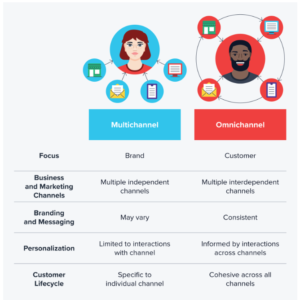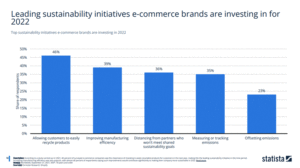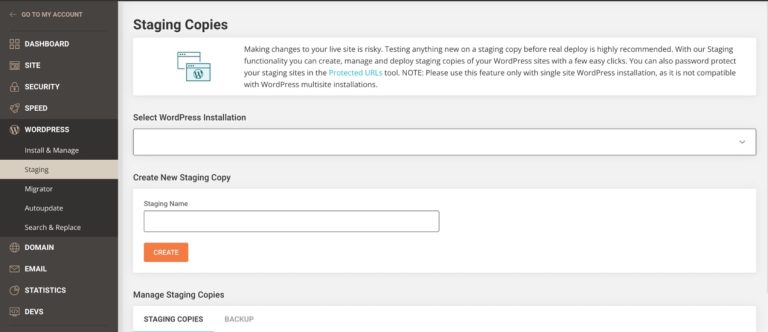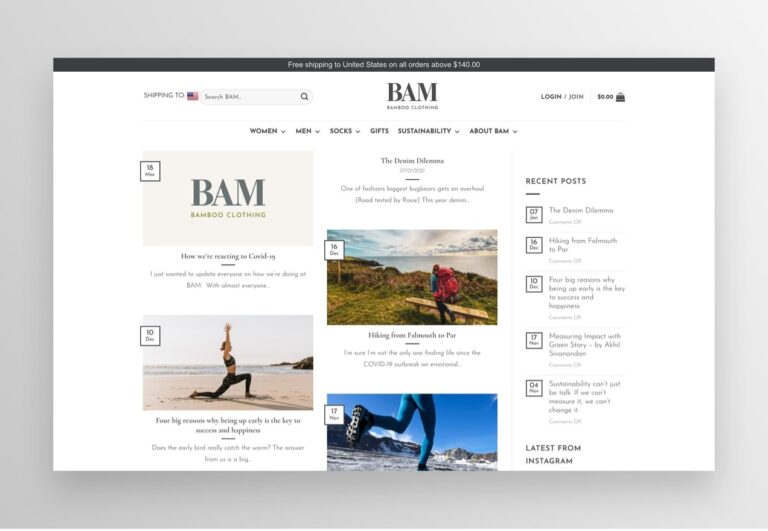Over recent years, the retail industry has undergone a significant transformation. This change has been driven by a combination of socioeconomic developments and advancements in technology. Despite these changes, however, the ultimate goal for retailers remains the same. They need to drive revenue by satisfying their customers. To do this, retailers must continuously innovate and adapt their strategies to keep up with changes in consumer behavior and expectations.
Analysts expect 2023 to be a year to explore new opportunities for some retailers, driven by the lessons learnt in the past years, while for others this year will be a reset moment, as they start their recovery from the difficulties of recent times.
Here are the major trends set to impact retail markets going forward, the ones merchants need to observe to sustain their objectives.
Top 7 retail marketing trends to look out for

The retail marketing trends for 2023 (and beyond) are, understandably, heavily dominated by eCommerce (and its variations). With that said, the physical world still has a key role to play in retail and hence retail marketing. In fact, the intersection and interaction between the digital worlds is driving most, if not all, of these 7 retail marketing trends.
Omnichannel marketing
Customers today use multiple devices, including smartphones, tablets, laptops and desktop computers, to browse and purchase products online. With the rise of eCommerce, customers have become increasingly accustomed to the convenience of shopping from anywhere, at any time. To remain competitive, retailers must adapt their marketing strategies to meet customers where they are, which means adopting an omnichannel approach.
Retailers can use omnichannel to create a unified and customized shopping experience for customers across various channels, both online and offline. This implies having a consistent and connected shopping experience across channels, with the option to seamlessly go from channel to channel, without journey disruption.
In order to be successful, a unified approach to sales needs to be backed by an omnichannel marketing approach. And there’s never been a better time to do so, given the richness of customer data merchants have access to. They can collect and analyze customer data and preferences using data analytics tools to gain insights into their behavior, allowing them to provide tailored and effective marketing messages. Such marketing messages can be delivered via multiple channels, such as email, social media advertising, personalized product recommendations and in-store promotions.

Source: CleverTap
Omnichannel marketing enables retailers to provide customers with multiple touchpoints throughout the shopping journey, allowing them to browse and purchase products on their preferred device or platform. This can include online marketplaces, social media platforms, mobile apps and even in-store experiences.
Hybrid omnichannel selling
Hybrid omnichannel selling is a strategy that combines the benefits of both online and in-store sales to provide customers with the best of both worlds. With this approach, customers can enjoy the personal touch and instant gratification of shopping in-store, along with the choice and convenience of shopping online.
By using this strategy, retailers can create a seamless and personalized shopping experience for customers, whether they are browsing online or visiting the physical store. The use of technology such as augmented reality, virtual reality and chatbots can help to enhance the in-store shopping experience while providing customers with additional information and a more engaging experience.
With hybrid omnichannel selling, customers can research products online before visiting the store, which makes them more informed and more likely to make a purchase. They can also have the option to order online and pick up in-store or purchase in-store and have items shipped to their home. This gives them the flexibility to choose the most convenient option for them.
Growth in the use of mobile and pop-up stores
The growth in the use of mobile and pop-up stores can be directly linked to the growth in hybrid omni-channel selling. Even larger, online-first retailers may be reluctant to commit to running permanent real-world stores. For smaller online-first retailers, it may seem like an impossibility.
Mobile and pop-up stores, on the other hand, carry much lower overheads and much less commitment. Even if they don’t earn their keep through sales (which they might), their costs can often be more than justified by their marketing benefits. They can be ways to build relationships with (potential) customers in the real world and hence guide them to other platforms such as websites and social media.
Pop-up shops can be either physical or virtual, each opening new avenues and channels for merchants. Businesses selling online can leverage physical pop-up stores to test sales on location, without committing to a permanent rent contract. On the other hand, virtual pop-up shops are temporary digital outlets, either website based or social media based, which aim to appeal to a specific, niche audience. Whether physical or virtual, pop-up stores are a good way for sellers to target an audience slice, to sell a limited range of products, and to enhance the shopper experience in the process.
Personalized experiences
The retail industry is placing greater emphasis on personalized experiences as they recognize their value in fostering customer satisfaction and loyalty. Retailers can now access a wealth of data that provides insights into consumer behavior and preferences, enabling them to tailor their marketing messages and interactions to each individual. As a result, customers can receive a more customized and engaging experience, which can lead to greater satisfaction and loyalty.
One way retailers can personalize the customer experience is by utilizing customer data to make tailored product recommendations. By analyzing a customer’s purchase history and browsing patterns, retailers can suggest products that are more likely to be of interest, increasing the chances of a sale. Additionally, personalized communication can also be utilized to create a more personalized experience. This can include customized email campaigns, social media interactions and even chatbots that can provide tailored support and recommendations.

Source: Bloomreach
Through collecting more data on customer behavior, retailers can gain a deeper understanding of the consumer journey and improve the overall shopping experience. By analyzing metrics such as website dwell time or the rate of shopping cart abandonment, retailers can identify areas of concern in the buying process and make adjustments to increase conversion rates. This can result in a smoother and more streamlined shopping experience for customers, leading to higher levels of satisfaction and greater loyalty.
Integrated physical and digital experiences
Today, retailers are realizing the significance of integrating physical and digital channels to provide a unified and captivating shopping experience for customers. This can involve implementing cutting-edge technologies and interactive experiences in physical stores, such as digital signage and augmented reality, to enhance the overall shopping experience.
In addition, retailers can leverage digital avenues to drive conversion rates. For example, partnering with opinion leaders or influencers on social media can increase brand awareness and reach a wider audience. The influencer marketing sector was estimated to have a value of $16.4 billion worldwide at the end of 2022, with 10.5 million European Instagram users being considered influencers in Europe alone. These metrics emphasize how social media platforms such as Instagram and TikTok have become powerful marketing channels for retailers, allowing them to showcase their products and connect with consumers in a more personal way.
Furthermore, incorporating digital technologies such as mobile apps and online marketplaces can enhance the overall customer experience by providing more choice and convenience. Customers can browse products online, make purchases through mobile apps and pick up their orders in-store, creating a seamless and integrated experience.
Social commerce and livestream shopping

The integration of shopping features into social media platforms such as Instagram, Facebook and WeChat has led to the rise of social commerce, enabling brands to showcase their products and drive conversions directly through their social media profiles.
This has made the shopping experience more seamless and convenient for customers, who can browse and purchase products without ever leaving the platform. In addition, social commerce allows brands to reach wider audiences and build stronger relationships with customers through personalized marketing messages and targeted advertising.
Livestream shopping takes this concept further by offering a more engaging and interactive shopping experience through live video broadcasts. Customers can ask questions and interact with hosts in real-time, making the shopping experience more personal and immersive.
These trends have been particularly successful in Asia-Pacific countries such as China, where livestream shopping has become a multi-billion dollar industry. More than 62% of Chinese internet users take part in live commerce, generating eCommerce sales of $167 billion US in 2020 in China. They are gaining popularity in other regions as retailers look for new and innovative ways to engage with customers and drive sales.
Emphasis on sustainability and ethics
In the current retail landscape, sustainability has emerged as a key concern for consumers, particularly among younger demographics. This shift in consumer behavior has compelled retailers to adopt sustainable practices to remain competitive, reduce their environmental impact and improve their reputation. By streamlining their supply chains, implementing circular economy models and adopting responsible sourcing and production methods, retailers can meet the growing demand for eco-conscious products and services.
One approach that retailers can take to promote sustainability is by encouraging repair, recycling, and reusing of products. This can include offering repair services, promoting recycling programs and creating incentives for customers to buy pre-owned items. Additionally, retailers can adopt more eco-friendly packaging and shipping practices to reduce their environmental impact.

Source: Statista
In addition to adopting sustainable practices, it’s becoming increasingly important for retailers to demonstrate a commitment to broader business ethics, such as workers’ rights and fair-trade practices. Consumers are more aware and concerned about the ethical practices of the brands they support, and they expect retailers to operate in a responsible and transparent manner. Retailers must take responsibility for their suppliers’ behavior and ensure that they are not engaging in unethical practices such as labor exploitation.
In short
The retail industry is in a state of constant change. This means that retailers must remain vigilant and responsive to evolving consumer needs and expectations. In the last few years alone, retailers have had to revolutionize their strategies to keep pace with the growth of eCommerce and its development into various niches such as mobile commerce and social commerce. Furthermore, external factors such as COVID-19 and the war in Europe have accelerated the pace of change and hence its challenges. In particular, both have disrupted supply chains and caused purchasers to reevaluate both their priorities and their habits.
Although these challenges have made it difficult for retailers to navigate the industry, they also provide opportunities for innovation and growth. Retailers can leverage emerging technologies, develop new strategies and focus on omnichannel engagement to create a more personalized and immersive shopping experience for their customers.
Additionally, customers are becoming more conscious of sustainable and ethical practices, making it crucial for retailers to prioritize these values. By doing so, retailers can enhance their brand reputation and strengthen their relationships with customers, leading to increased customer loyalty and satisfaction.
Retailers who can effectively re-imagine the customer experience and adjust to changing consumer needs will be in a favorable position to succeed in the future. It is therefore essential for retailers to assess their strategies, identify areas for improvement and invest in new technologies and practices that can boost customer satisfaction and loyalty. Those who prioritize customer experience and incorporate innovative technologies will have the greatest chance of thriving, not only in the present but also in the future.





